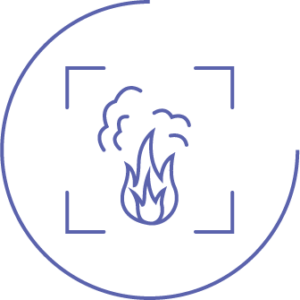Detecting hazards with computer vision
According to research from the International Labour Organization, more than 340 million workplace accidents occur every year (as of 2022). Implement computer vision algorithms to detect hazards as they happen – and instigate immediate actions – to reduce the risk of injury, property damage, liability and costly shutdowns.

Use video analytics to recognize objects or actions and determine whether they’re hazardous in real-time. And, review anonymized and aggregated data over time to understand trends and patterns in order to improve workplace practices. Industries and business functions that entail high levels of physical interaction are at the forefront of this movement, including retailers and venue operators, construction, warehousing, manufacturing, mining and transportation.
Common uses for computer-vision-enabled hazard detection include identifying and responding to smoke, fire, leaks, spillages, explosions, tripping hazards (abandoned objects), proximity breaches (moving vehicles and active machinery), missing protective or safety equipment, and abandoned workstations.
*Disclaimer: Outcomes described and depicted are illustrative in nature. Learn more.